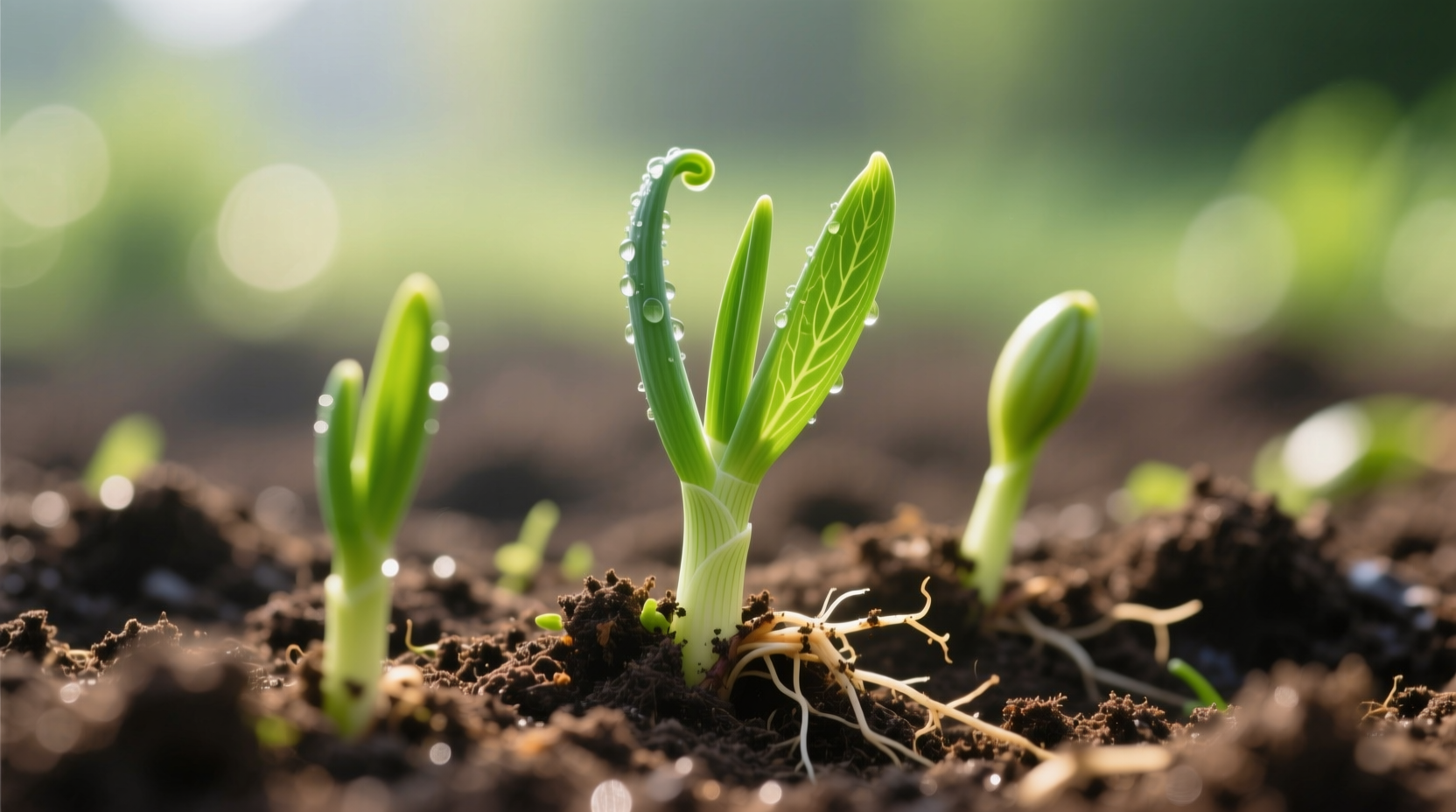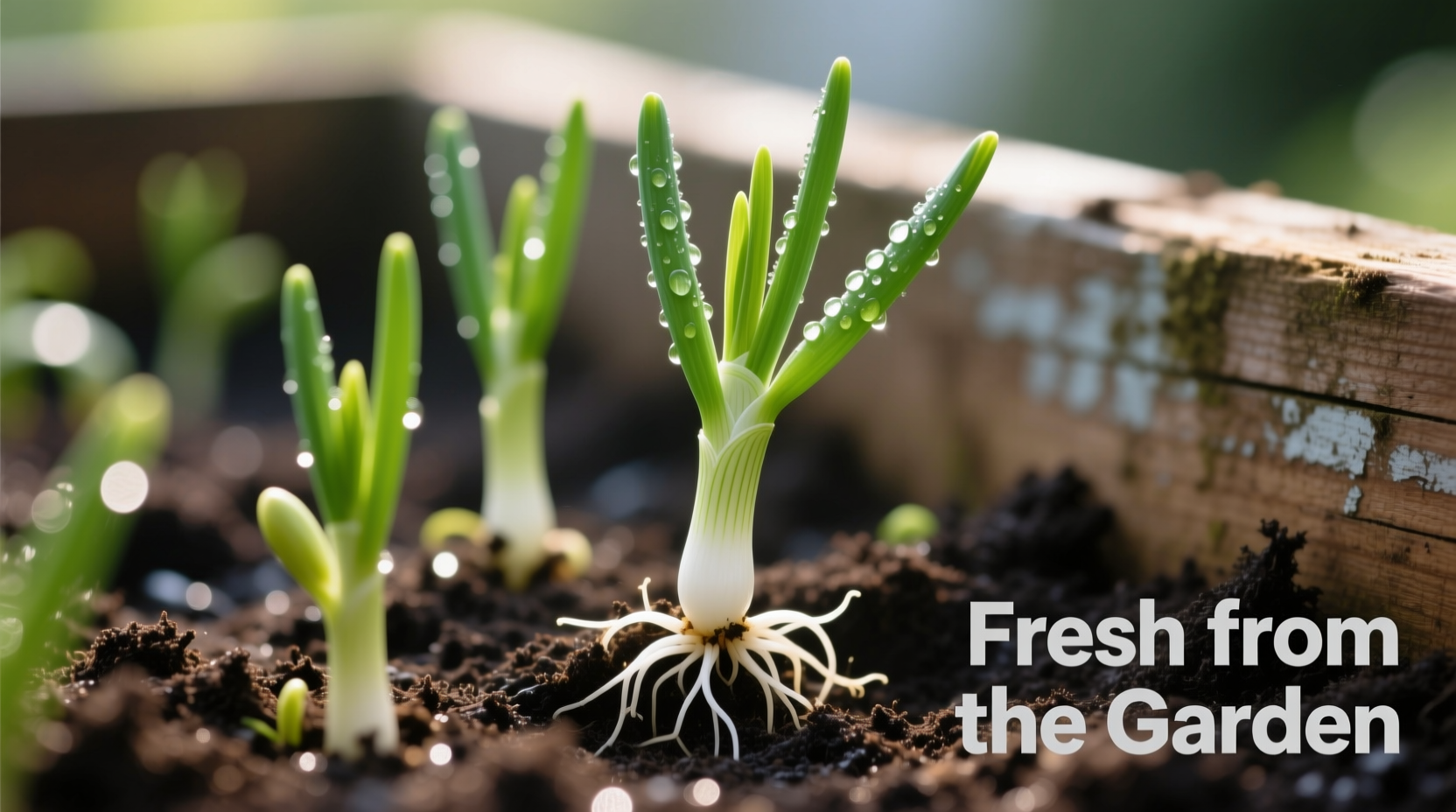Discover exactly how to grow perfect spring onion seedlings with this comprehensive guide. Whether you're a beginner gardener or looking to improve your current technique, you'll learn the precise timing, soil conditions, and care methods that lead to healthy, flavorful spring onions. No more failed batches or stunted growth—just reliable results from seed to harvest.
Planning Your Spring Onion Seedling Project
Successful spring onion cultivation starts with proper planning. These fast-growing alliums can be planted as soon as soil temperatures reach 50°F (10°C), making them ideal for early spring planting in most climates. For continuous harvests, plant new seeds every 2-3 weeks throughout the growing season.
When selecting varieties, consider your climate and intended use. Allium fistulosum (bunching onions) perform better in warmer regions, while Allium cepa varieties work well in cooler climates. Popular choices include:
| Variety | Days to Maturity | Best Climate | Flavor Profile |
|---|---|---|---|
| White Lisbon | 60-70 | Cool to moderate | Mild, sweet |
| Evergreen Hardy White | 70-80 | Cold tolerant | Stronger flavor |
| Red Beard | 65-75 | Warm climates | Vibrant color, medium heat |
Soil preparation is critical for spring onion success. These plants prefer slightly acidic to neutral soil (pH 6.0-7.5) with excellent drainage. Amend heavy clay soils with 2-3 inches of compost or well-rotted manure before planting. Raised beds work exceptionally well for spring onions, improving drainage and warming the soil faster in spring.

Step-by-Step Planting Guide
Follow these precise steps for optimal germination and early growth:
- Seed depth: Plant seeds 1/4 to 1/2 inch deep—deeper planting delays emergence
- Spacing: Sow seeds 1 inch apart in rows 12-18 inches apart
- Watering: Keep soil consistently moist but not soggy during germination
- Temperature: Maintain soil temperature between 60-75°F (15-24°C) for best results
Germination typically occurs within 7-14 days. During this critical period, monitor soil moisture carefully—spring onion seeds need consistent moisture to establish strong roots. Avoid overhead watering which can wash away tiny seeds; instead, use a gentle misting technique.
According to the USDA Agricultural Research Service, spring onions grown in soil temperatures below 50°F (10°C) experience significantly slower growth rates and increased susceptibility to fungal diseases. [Source: USDA Agricultural Research Service]
Caring for Your Seedlings
Once your seedlings reach 2-3 inches tall, proper thinning becomes essential. This often-overlooked step directly impacts your final harvest quality:
- Thin to 1-2 inches between plants for standard bunching onions
- For larger bulbs, space plants 3-4 inches apart
- Use thinned seedlings immediately in salads or as garnishes
Watering requirements change as plants mature. During the first month, maintain consistent moisture (about 1 inch of water per week). As bulbs begin forming, reduce watering slightly to encourage bulb development rather than excessive leaf growth.
Fertilization needs are specific for spring onions. Apply a balanced fertilizer (10-10-10) when seedlings are 4 inches tall, then switch to a nitrogen-rich formula (21-0-0) every 3-4 weeks. Avoid high-phosphorus fertilizers which encourage excessive bulb formation at the expense of the green tops you're harvesting.
Spring onions face several common challenges that vary by climate zone. In humid regions, downy mildew becomes a significant concern, while dry climates struggle more with thrips infestation. The University of California Cooperative Extension recommends rotating allium crops every 3-4 years to prevent soil-borne disease buildup. [Source: University of California Cooperative Extension]
Troubleshooting Common Issues
Even with proper care, problems can arise. Here's how to identify and address the most frequent spring onion seedling issues:
- Yellowing leaves: Usually indicates nitrogen deficiency or overwatering. Test soil and adjust fertilizer accordingly.
- Thin, weak stems: Sign of overcrowding or insufficient light. Thin plants and ensure 6+ hours of direct sun daily.
- White spots on leaves: Likely downy mildew. Remove affected leaves and improve air circulation.
- Stunted growth: Could indicate soil pH imbalance or nematode infestation. Test soil and consider crop rotation.
Temperature extremes present specific challenges. When temperatures exceed 85°F (29°C), spring onions may bolt (produce flowers), making the bulbs tough and bitter. In cooler climates below 50°F (10°C), growth slows dramatically. Understanding these climate limitations helps you time your planting for optimal results.
Harvesting Your Spring Onions
Timing your harvest correctly ensures the best flavor and texture. Spring onions are ready when:
- Stems reach 6-8 inches tall
- Diameter is about 1/4 to 1/2 inch
- Color is vibrant green without yellowing
For continuous harvests, cut outer stems first, allowing inner ones to continue growing. When harvesting the entire plant, gently loosen soil around the base before pulling to avoid breaking the stem. Never wait until bulbs become large—spring onions are meant to be harvested young for their characteristic mild flavor.
Proper storage extends freshness. Keep harvested spring onions in a plastic bag with a damp paper towel in the refrigerator for up to 2 weeks. For longer storage, freeze chopped onions in ice cube trays with water or oil.
Spring Onion Growth Timeline
Understanding the growth stages helps you provide appropriate care at each phase:
- Days 1-7: Germination phase - maintain consistent moisture
- Days 8-21: Seedling establishment - thin when 2-3 inches tall
- Days 22-40: Active growth phase - regular watering and fertilizing
- Days 41-60: Harvest window - stems reach optimal size
- Days 61+: Bolting risk increases - harvest promptly
This timeline varies based on temperature and variety, but provides a reliable framework for planning your care routine. The Royal Horticultural Society notes that spring onions grown in optimal conditions can progress from seed to harvest in as little as 45 days. [Source: Royal Horticultural Society]
Frequently Asked Questions
How deep should I plant spring onion seeds?
Plant spring onion seeds 1/4 to 1/2 inch deep in well-prepared soil. Deeper planting can delay germination and weaken seedlings. In heavier soils, aim for the shallower end of this range.
When is the best time to plant spring onion seedlings?
The ideal planting time is when soil temperatures reach at least 50°F (10°C), typically 2-4 weeks before your last expected frost date. For continuous harvests, plant new seeds every 2-3 weeks throughout the growing season.
Why are my spring onion seedlings falling over?
Seedlings falling over typically indicates insufficient light or overcrowding. Ensure plants receive at least 6 hours of direct sunlight daily and thin seedlings to 1-2 inches apart when they reach 2-3 inches tall. Overwatering can also weaken stems.
Can I grow spring onions in containers?
Yes, spring onions grow well in containers with proper drainage. Use pots at least 6 inches deep with quality potting mix. Space seeds 1 inch apart initially, then thin to 1-2 inches apart. Container-grown onions need more frequent watering than garden beds.
How often should I water spring onion seedlings?
Keep soil consistently moist but not soggy during germination. Once established, provide about 1 inch of water per week, adjusting for rainfall and temperature. During hot weather, you may need to water daily to maintain consistent moisture levels.











 浙公网安备
33010002000092号
浙公网安备
33010002000092号 浙B2-20120091-4
浙B2-20120091-4